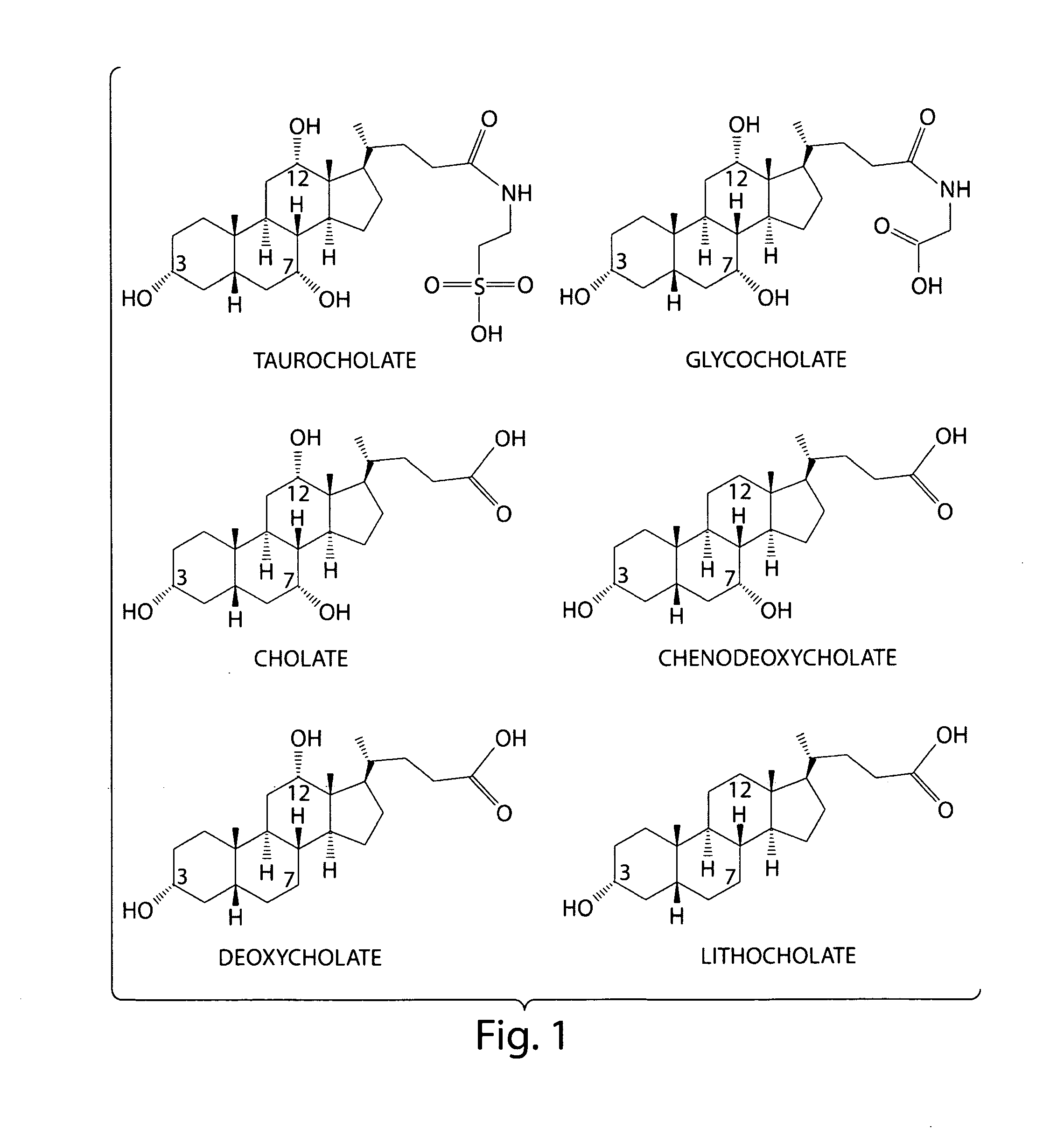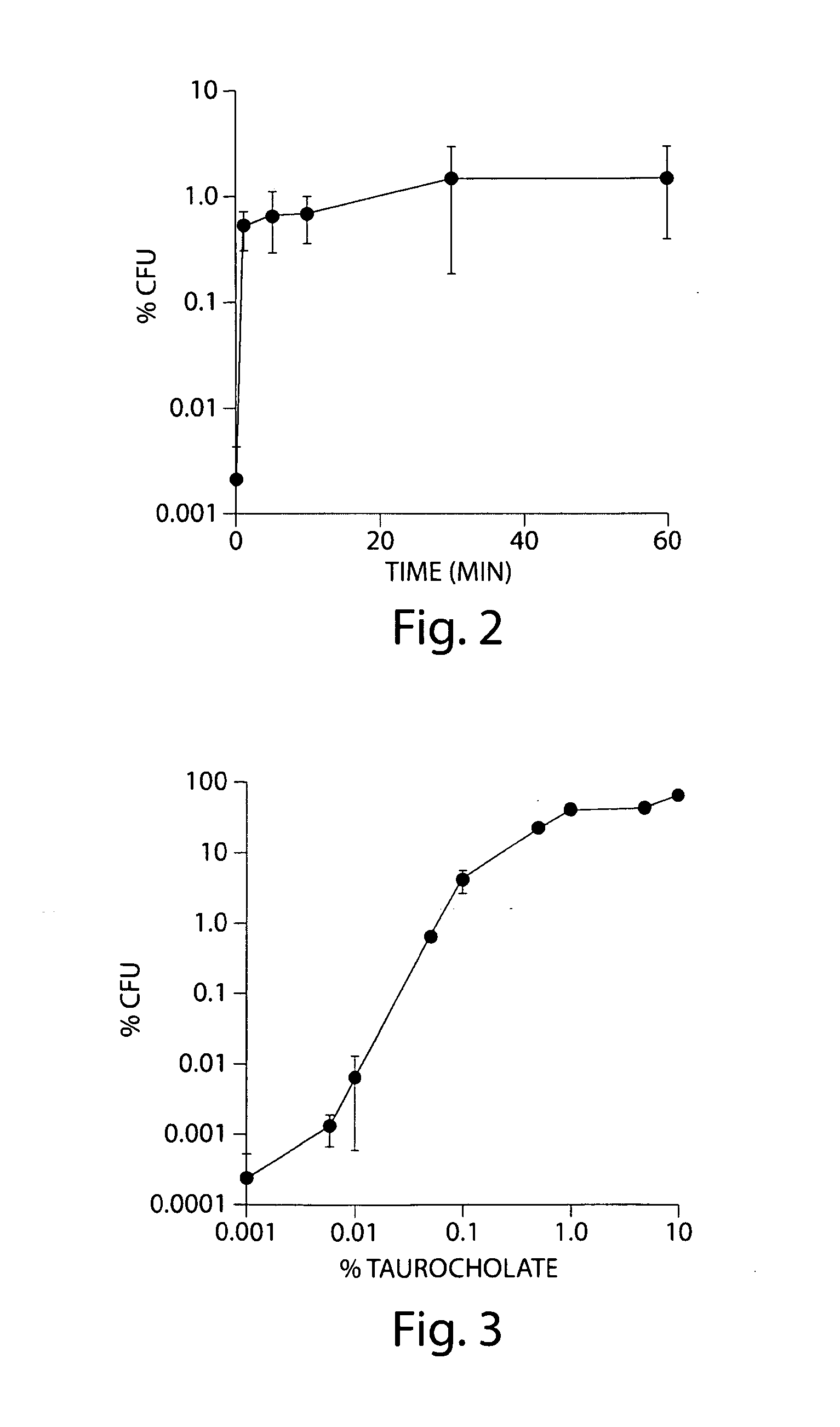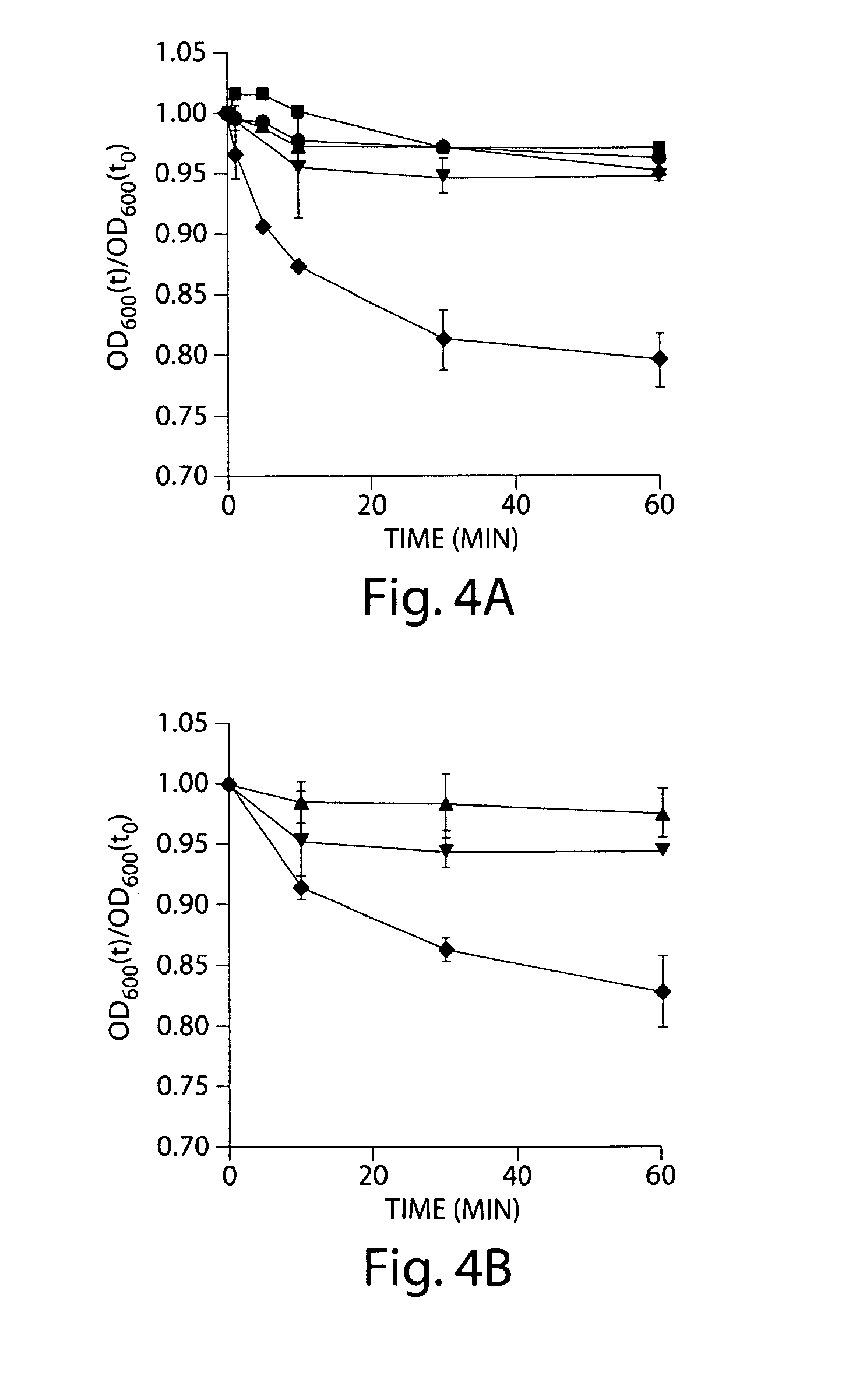Methods and compositions for inhibiting clostridium difficile spore germination and outgrowth
a technology of clostridium difficile and spores, which is applied in the direction of antibacterial agents, drug compositions, medical ingredients of bacteria material, etc., can solve the problems of prone to relapse in treated subjects, and achieve the effects of inhibiting growth, and preventing clostridium difficile-associated diseas
- Summary
- Abstract
- Description
- Claims
- Application Information
AI Technical Summary
Benefits of technology
Problems solved by technology
Method used
Image
Examples
example 1
Taurocholate Exposure Enhances Colony Formation by C. Difficile Spore In Vitro
[0202]Inclusion of 0.1% taurocholate in BHIS agar plates enhanced the recovery of C. difficile spores approximately 105-fold. To determine how long an exposure to taurocholate is required to increase colony formation, spores and vegetative bacteria were heated at 60° C. for 20 mM and washed three times with water to remove traces of nutrients that may affect germination. Spores were then returned to the anaerobic chamber and treated with 0.1% taurocholate in water (FIG. 2). At the indicated times, samples were removed, diluted in BHI medium, and plated on BHIS agar (without taurocholate). One sample was not incubated in vitro with taurocholate but was plated directly on BHIS(TA). This sample served as a reference for 100% recovery. As shown in FIG. 2, as little as 1 minute of exposure to taurocholate resulted in an increase in spore recovery from 0.0025% to about 1%. Further incubation did not significantl...
example 2
Dependence of C. Difficile Spore Colony Formation on Taurocholate Concentration
[0203]Because colony-forming ability in response to 0.1% taurocholate did not reach that of spores plated on BHIS(TA) directly, the in vitro recovery of spores in response to different concentrations of taurocholate was tested. Spores were prepared as described above, washed with water to remove traces of nutrients, incubated for 10 min with taurocholate at concentrations ranging from 0.001% to 10%, and plated on BHIS agar without taurocholate. Spore colony-forming ability was compared to that of spores plated directly on BHIS(TA). Incubation of spores with 0.001% taurocholate resulted in colony formation by approximately 0.0002% of the total number of spores (FIG. 3). This efficiency of colony formation was routinely observed in the absence of any taurocholate and can vary approximately 10-fold (FIG. 2). Increasing the concentration of taurocholate increased the plating efficiency of C. difficile spores ...
example 3
C. Difficile Germination in Response to Primary Bile Salts
[0204]In B. subtilis and other species, the addition of a germinant to spores results in a change from phase bright (refractile) spores to phase dark spores due to the release of Ca2+-DPA and rehydration of the spore. Moir et al. (1990) Annu. Rev. Microbiol. 44:531-553. This transition is the first stage of germination, can be measured as a decrease in the optical density of the culture, and can be used to define germinants. To see if taurocholate enhances colony formation by increasing the rate or extent of spore germination, C. difficile spores were incubated in phosphate buffer (pH 7.2) with 1% taurocholate or in buffer alone. One percent taurocholate was chosen because this concentration enabled colony formation by about 30% of the total number of spores during in vitro exposure (FIG. 3). At regular intervals, the OD600 was measured and plotted against time. By this measure, taurocholate did not induce germination of C. d...
PUM
| Property | Measurement | Unit |
|---|---|---|
| pH | aaaaa | aaaaa |
| pH | aaaaa | aaaaa |
| humidity | aaaaa | aaaaa |
Abstract
Description
Claims
Application Information
 Login to View More
Login to View More - R&D
- Intellectual Property
- Life Sciences
- Materials
- Tech Scout
- Unparalleled Data Quality
- Higher Quality Content
- 60% Fewer Hallucinations
Browse by: Latest US Patents, China's latest patents, Technical Efficacy Thesaurus, Application Domain, Technology Topic, Popular Technical Reports.
© 2025 PatSnap. All rights reserved.Legal|Privacy policy|Modern Slavery Act Transparency Statement|Sitemap|About US| Contact US: help@patsnap.com



